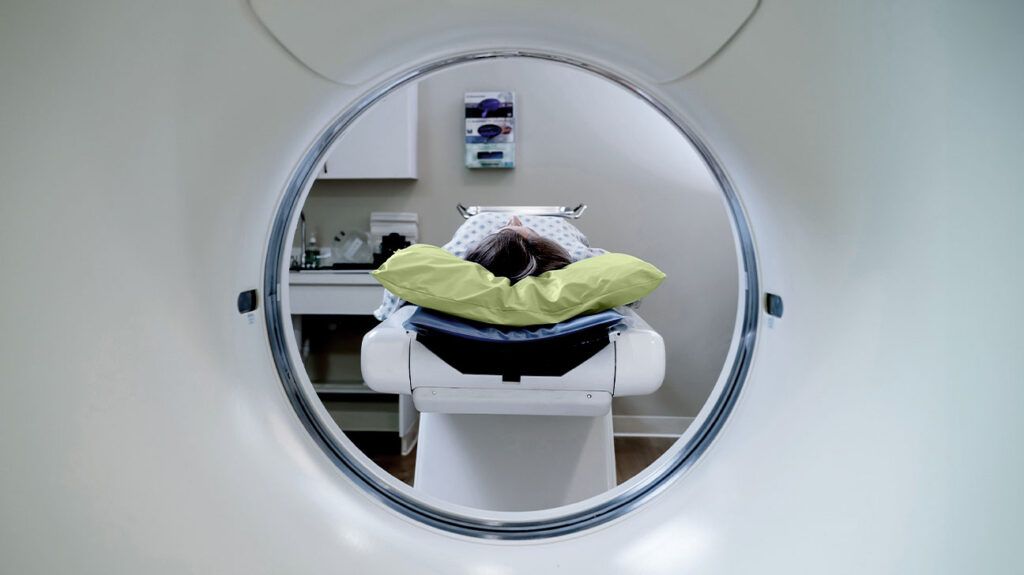Medical professionals use CT scans to help diagnose and stage bladder cancer. While CT scans can provide valuable information, they are not perfect and have certain limitations.
CT scans
However, CT scans may not be as sensitive in detecting very small or early stage tumors, and they cannot provide a definitive cancer diagnosis without a biopsy.
For this reason, a cystoscopy, alongside a biopsy and pathology under a microscope, is a suitable method for diagnosing bladder cancer. A CT scan is better suited for clinical staging in ruling out distant metastases or local involvement with a tumor.
This article examines the accuracy of CT scans for bladder cancer.

A urologist may use a CT scan for bladder cancer for various reasons, including initial diagnosis, staging, and monitoring a response to treatment. CT scans are the most common imaging tool doctors use to detect bladder tumors.
The frequency of CT scans for bladder cancer depends on individual factors, including the stage of cancer, the aggressiveness of the disease, the type of treatment received, and the person’s overall health.
Typically, CT scans help determine the stage of bladder cancer, as well as monitor for signs of recurrence after treatment.
However, doctors cannot only use CT scans to diagnose cancer. They may not be as sensitive in detecting very small or early stage tumors, and they cannot provide a definitive cancer diagnosis without a biopsy.
CT scans
- the presence and size of bladder tumors
- invasive growth and local spread of cancer into the bladder wall and surrounding structures
- the involvement of lymph nodes near the bladder
- distant metastases to other organs
- the evaluation of treatment response and recurrence monitoring
CT scans cannot determine:
- the exact type and grade of bladder cancer
- the distinction between benign and malignant growths without a biopsy
- microscopic invasion or early stage tumors that
may not be visible on the CT scan
The entire CT scan procedure usually takes 10 to 20 minutes to complete.
Prep
Most people will not need any special preparation for a routine CT scan of the bladder.
However, people may need to drink plenty of water before the procedure to fill their bladder, which helps provide better imaging and visualization of the bladder walls.
People may also need to avoid eating or drinking for a few hours before the scan, especially
Procedure
CT scans are safe, but like any medical procedure involving radiation or contrast agents, there may be some risks. However, the benefits of obtaining valuable diagnostic information often
The main risks are for lab technicians and other medical professionals who regularly experience exposure to CT scanners.
People will lie down on a narrow table that slides into the CT scanner, which is a large doughnut-shaped machine.
The technologist will position a person appropriately before leaving the room to avoid radiation exposure. However, they can see and hear through an intercom system.
During the scan, people need to remain still to ensure clear images. The CT scanner will rotate around a person, taking multiple X-ray images from different angles.
Sometimes, a contrast dye may enhance the images. The contrast dye helps highlight the blood vessels and urinary tract, making it easier to identify abnormalities.
Results
After the CT scan, a radiologist will interpret the images and prepare a report. The doctor will discuss the results, explaining any findings and their implications for a person’s health.
If there are abnormalities on the scan, further tests, such as cystoscopy or biopsy, may confirm the diagnosis, allowing a doctor to plan appropriate treatment.
In addition to CT scans, there are several other tests for the detection and diagnosis of bladder cancer.
Cystoscopy
Cystoscopy is a
This allows the urologist to directly examine the inside of the bladder for abnormalities, such as tumors or other suspicious lesions.
Healthcare professionals consider cystoscopy the
If the urologist notices any suspicious areas during cystoscopy, they can perform a biopsy to confirm the presence of bladder cancer and determine its type and grade.
Cystoscopy is highly sensitive for detecting bladder tumors, even small and early stage lesions that might not be visible on CT scans.
Other tests for bladder cancer may
- MRI scans
- ultrasound scans
- urine cytology, which involves testing a urine sample for cancer cells
Read on for the answers to some commonly asked questions about CT scans for bladder cancer.
What is the most reliable test for detecting bladder cancer?
The most reliable test for detecting bladder cancer is cystoscopy with a biopsy.
While cystoscopy with a biopsy is the most accurate method for diagnosing bladder cancer,
Does bladder cancer always show up on a CT scan?
Bladder cancer does not always appear on a CT scan, especially in its early stages or when the tumor is very small.
While CT scans are valuable imaging tools, they may not be sensitive enough to detect all types of bladder cancer, particularly noninvasive or superficial tumors or very small lesions.
CT scans can help detect and stage bladder cancer.
However, a CT scan may not detect very small bladder tumors or lesions present in certain bladder areas, such as the bladder wall.
Additionally, CT scans cannot definitively differentiate between benign and malignant tumors. Further tests, such as cystoscopies or biopsies, are often necessary to confirm the presence of bladder cancer and determine its stage and grade.
